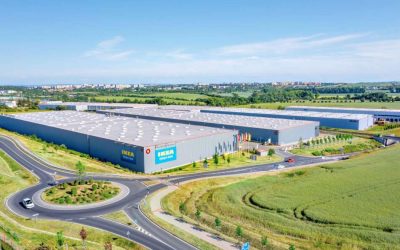Akular co-founder Martin Rapos took part in the Smart Cities week at the Expo 2020 in Dubai in early November at the invitation of Globesec. He spoke in front of a large crowd on a panel of experts organized by Globesec, who chose Akular in part on the recommendation of its investors from the Crowdberry crowdfunding platform. Martina Slabejova, Group Leasing Director at HB Reavis (and an Akular client) was another of the speakers at the Dubai event.
 Initially, Akular specialized in a revolutionary augmented reality technology. Users found they could slash the time and expense involved in turning working 3D digital files into images that could be superimposed onto the screen of a phone or tablet. This enabled developers to bring potential clients, as well as local stakeholders to a building site to preview their plans. Since then the company has expanded its digitization services in order to serve a broad range of use cases.
Initially, Akular specialized in a revolutionary augmented reality technology. Users found they could slash the time and expense involved in turning working 3D digital files into images that could be superimposed onto the screen of a phone or tablet. This enabled developers to bring potential clients, as well as local stakeholders to a building site to preview their plans. Since then the company has expanded its digitization services in order to serve a broad range of use cases.
In Dubai, Rapos spoke about the ways digitization can enable developers to communicate their plans for a space. But techniques such as Augmented Reality also have numerous internal uses as well. “Even after you make the decision to build, there’s still a lot of value engineering during construction that goes on, during construction and preconstruction. You need to have your stakeholders on board with every decision and they want to see more than ever before. Digitizing means you can communicate your progress every step of the way.”
Digitization has come slowly to the construction and property business, but acceptance of the trend is now gaining pace rapidly. “The advantage of having an updated 3D model of your building you’re constructing is that once it’s completed, you can attach live data to that model,” said Rapos. “These monitors keep constant track of every possible data point. And when those data points are connected to the 3D model into a single platform.” This, he explains, is what is meant by the term Digital Twin. “A visual representation of the building’s current status.”

The author with Akular’s Sofia Matulikova and Martin Rapos
He says the benefits of digitization for the public sector are quite straight forward. “We worked with a number of cities and municipalities and the question is always how can they engage the communities in their plans. So they can communicate what kind of zone they’re planning, or what purpose a new building is expected to serve.”
In the Middle East, Akular is currently pursuing opportunities in enormous projects that would have a significant public sector component. The sheer volume and size of these investments will necessitate a reporting system that’s both highly sophisticated and robust, but also efficient. Rapos believes that multi-layered and adjustable visualizations are the obvious way forward.
Also in ThePrime
Benthem Crouwel wins Velska’s design competition for Olbrachtová station project in Pankrac
Lukáš Litera (Colliers): Automated reception areas have arrived
Iterait pushes data transparency with AI-driven footfall tracker






